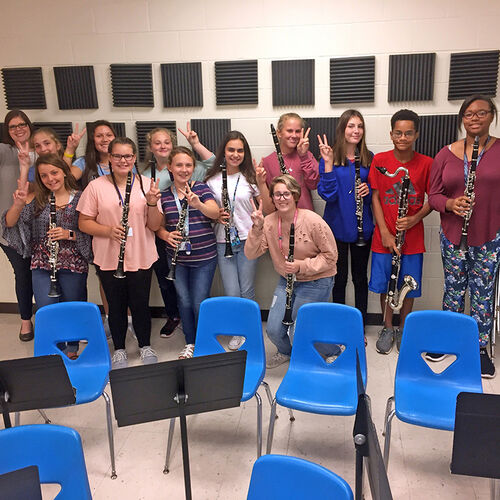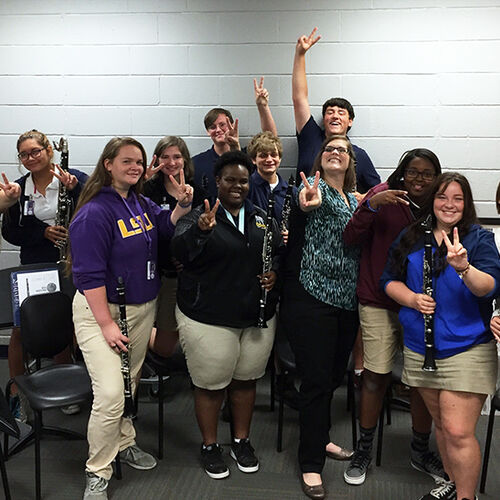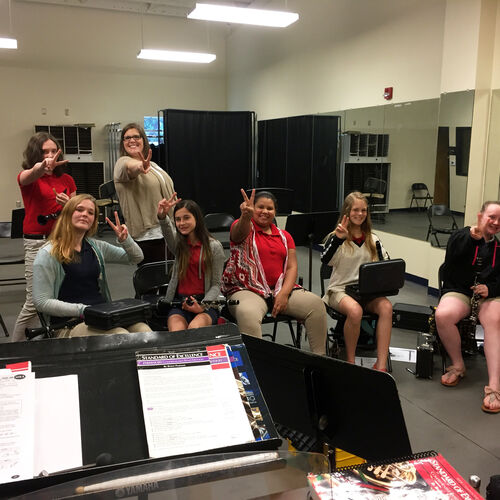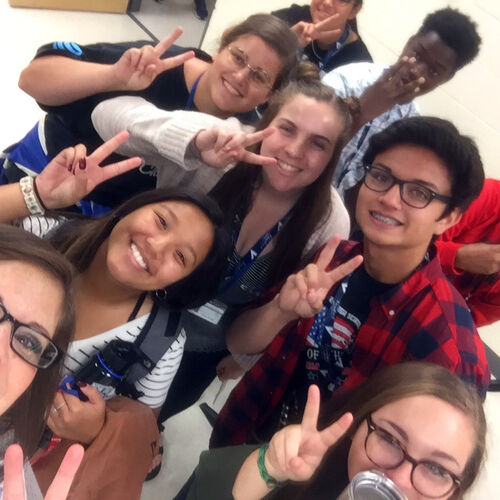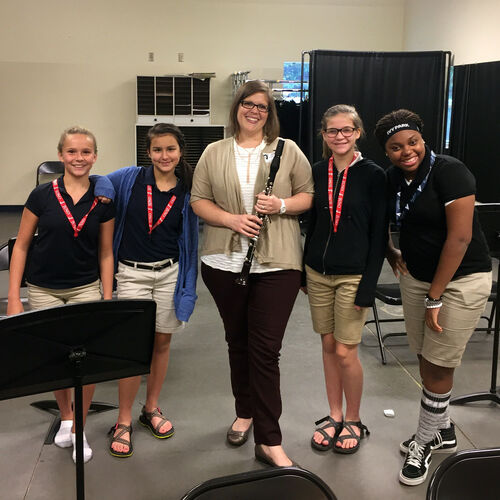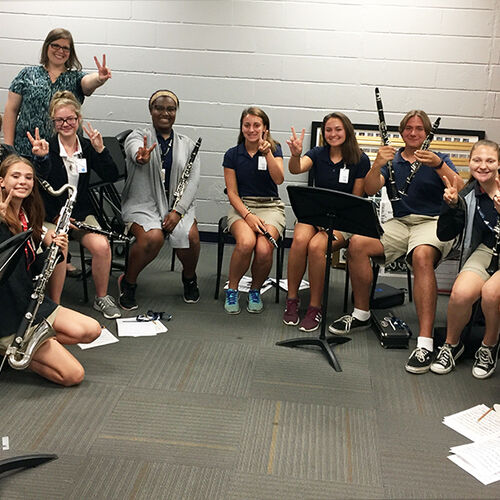Overcoming and Preventing Injury
by Dr. Jackie McIlwain
Date Posted: November 02, 2017
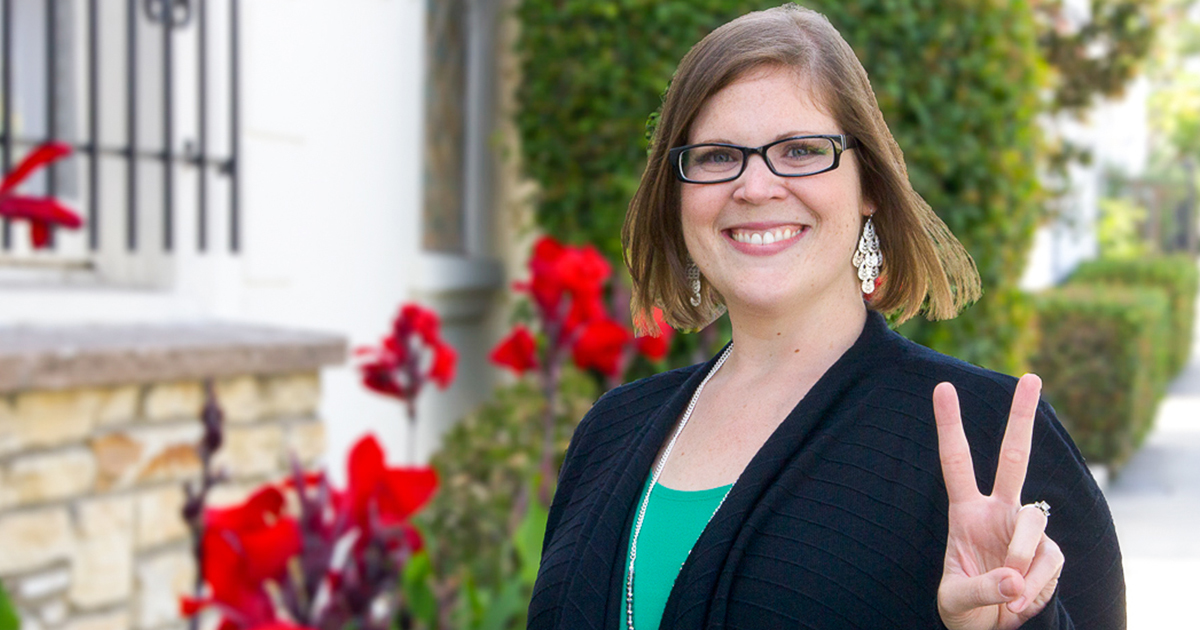
Dr. Jackie McIlwain is a Vandoren Regional Artist. The goal for the Vandoren Regional Artist program is to enhance the quality of the music experience through education and the assistance of Vandoren. These highly trained professional educators and performers will engage your students through educational and fun sessions. The clinics they conduct cover a broad spectrum of topics and, based on your input, can be customized to fit the needs of your students. Contact us today to arrange your free Vandoren clinic.
I have done quite a bit of research on musicians’ injuries and find it staggering the amount of musicians who have experienced a performance related injury. Many of us are not sure what we need to do to prevent it or how to approach the healing process. I would first like to share my personal journey of how I overcame a career-threatening injury and why I am such an advocate for full body awareness while playing one’s instrument. I will soon be sharing more specific information to help you and your students.
As a sophomore clarinet performance major, I experienced increasing pain in my right forearm, wrist, and thumb. My clarinet professor, who is an incredible musician and teacher, worked with me on hand position over the course of months but nothing seemed to help. The pain continued to worsen and my arm began to go numb in practice and performance. I remember performing in recitals in which my fingers, hand, and forearm went completely numb, but I kept playing because my mind was repeating “the show must go on.” Muscle memory carried me through those performances.
It was at this point when my professor suggested I see an Alexander Technique (AT) teacher who happened to be on faculty within our School of Music. I had no idea what to expect, nor did I have a clue as to what AT was or how it could help me. The first activity she had me do was walk down the hallway. Upon return, she pointed out that I habitually kept my right arm and shoulder raised at all times. She moved my arms in a very delicate fashion to help me release the tension, along with showing me floor exercises that made me realize the drastic difference of tension between my left and right sides. This was it for me, I was hooked. The observation of tension in my arm was fascinating to me, however, the biggest change was learning how to release the arm muscles. It took a period of months of completing the exercises daily and continual attention to my arm while playing clarinet, as well as throughout the day without my instrument. My symptoms finally lessened, but was still present at times. This was such improvement that I was absolutely enthralled with this method of body awareness and continued studying and practicing it diligently.
I finished my undergraduate degree and felt like I had been healed and no longer needed to practice these methods. I went on to graduate school and within a year my arm was hurt even worse. At this point, my right arm would change colors when I played clarinet! All I had to do was raise my arm and within a few seconds it would be ghostly white. Upon returning it to my side it became bright red. I also experienced constant tingling at my wrist. I saw a total of nine doctors without a concrete diagnoses. I was falsely diagnosed with Carpel Tunnel Syndrome, Raynaud’s Syndrome, possible Cubital Tunnel Syndrome, but after much research, I finally discovered (which was later confirmed) I had Thoracic Outlet Syndrome. This syndrome is when the main nerve and artery that extend from the thoracic cavity into the arm are compressed under the clavicle due to tension. I had to take four months off of playing clarinet in order for the tingling in the wrist to subside. I also started pursuing body awareness more diligently as I had a few years prior. The more I studied AT, which included principals of Body Mapping, the more I was able to play without pain.
After healing for the second time, I continued my studies and finished my Doctor of Music degree in 2010. I rarely experience pain caused by playing my instrument, but when I do I realize I need to listen to my body more carefully. Perhaps I need more sleep, more down time to allow my body to release tension, or a massage! Because I have had to listen to my body so much, I have learned its warning signs and have been able to maintain a healthy performing schedule. I have since started teaching clarinet at The University of Southern Mississippi and have become a licensed Body Mapping teacher. I will soon offer a Body Mapping course through the university in addition to private Body Mapping lessons.
If you are not too familiar with the body awareness methods I have mentioned, I will do my best to give you my own explanation for these two methods, both in which I believe have tremendous value for everyone, but especially performers. Both methods are within the field of somatics, which is the study of how the body moves. F.M. Alexander was an actor who repeatedly lost his voice in performance. After seeing countless doctors and following all of their suggestions without success, he discovered by using mirrors that each time he began to recite he brought his chin forward and up. This extra musculature effort would cause his voice to disappear in the middle of a performance. By studying the body and spending much time in front of a room of mirrors, Alexander created a method to help other performers to use their bodies in effective and efficient ways. My personal experience with Alexander Technique included learning about basic anatomy and physiology, learning to be aware of my entire body with and without my instrument, and how we are intended to move.
Body Mapping Explained
Body Mapping was born from Alexander Technique by Barbara Conable, an internationally renowned AT teacher, and was designed specifically for musicians to learn basic anatomy and physiology of the body and how that knowledge can help free tension and allow freedom to create music as we intend to without limitation or pain. Each person has a body map in their mind of how their body is constructed and how it should move. If one aspect of this is cloudy or inaccurate, then the movement will be not be efficient. Therefore, in Body Mapping, we discuss various parts of the body, how they are all connected, and the overall alignment. Body Mapping can be taught via private lessons and the six-hour course entitled “What Every Musician Needs to Know about the Body.” The course is divided into six topics: Movement, Senses, and Attention; Balance; Breathing; Arms; Legs; and Application, which usually consists of a master class.
Having overcome a career-threatening injury with the help of Alexander Technique and Body Mapping, I feel it is my mission as a music educator to adjust my pedagogy in a manner that will foster learning with correct basic anatomy knowledge and body awareness while making music. Many fine musicians are not as fortunate as myself to have had the opportunity to study any method within the somatic field, but with lessons and classes being taught via the internet, every musician can have this opportunity. If you are interested in learning more about Body Mapping, you can visit bodymap.org or email me at jacqueline.mcilwain@usm.edu
Vandoren Artist-Clinicians
The goal for the Vandoren Artist-Clinician program is to enhance the quality of the music experience through education and the assistance of Vandoren. These highly trained professional educators and performers will engage your students through educational and fun sessions.
View More